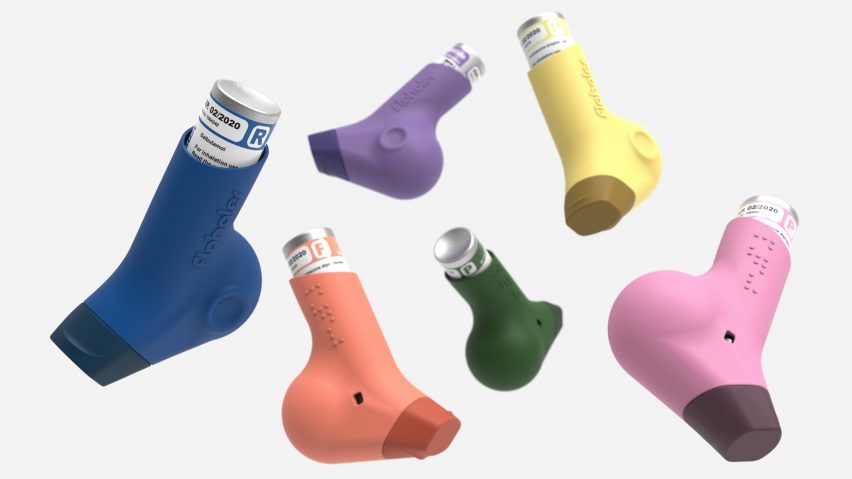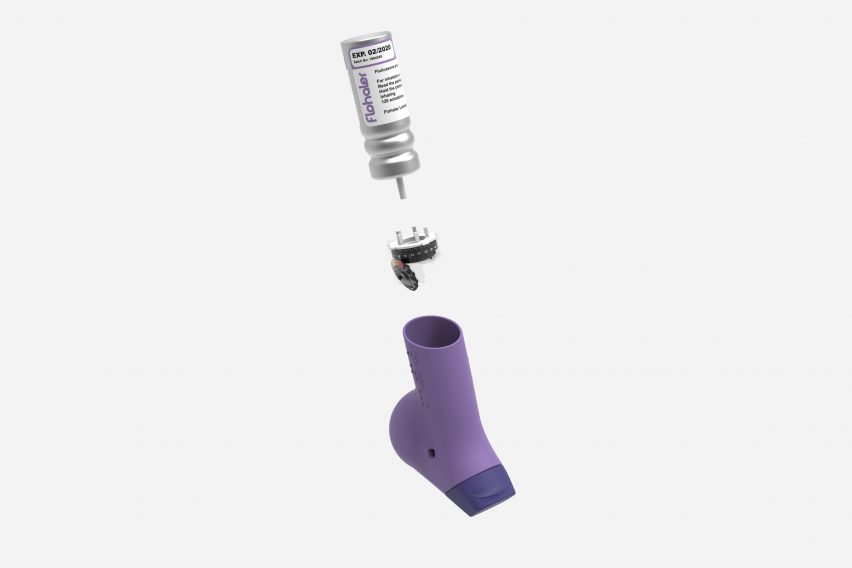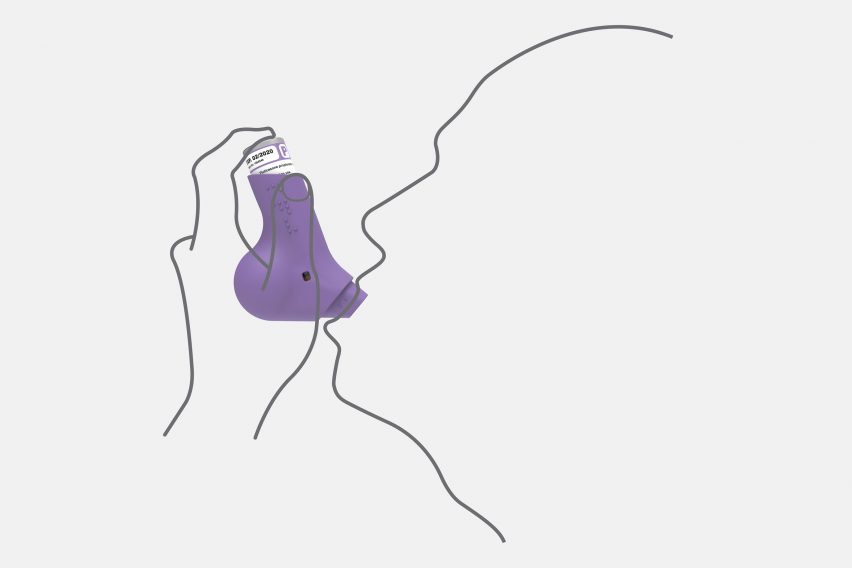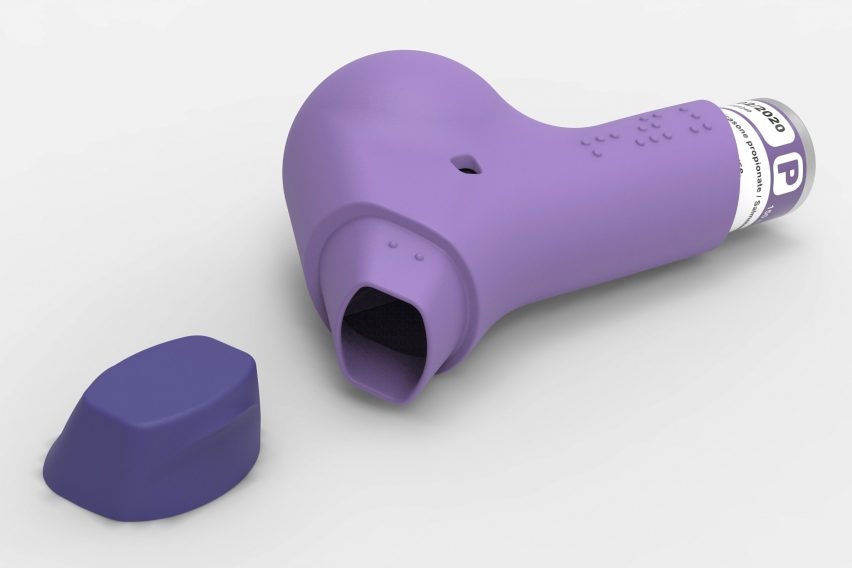
Flohaler is an easy-to-use inhaler that helps asthmatics receive a better dose
Design graduate James Plimmer has created an inhaler for asthmatics that improves posture and technique during use to ensure more medicine reaches the lungs.
The concept is intended to improve the pressurised metered dose inhaler (PMDI) by helping users maintain an optimised inhaler technique over time.
The problem with existing inhalers is ensuring an optimum amount of medicine reaches the lungs.
Poor technique can mean that as little as seven per cent of medication makes its way to the lungs, in comparison to around 50 per cent when the inhaler is used correctly.

According to Plimmer's research, inhalers are used incorrectly 70 to 90 per cent of the time, contributing to a statistic suggesting that 67 per cent of asthma-related deaths are preventable through improved asthma care.
His design aims to improve the user's posture when using the inhaler by encouraging them to raise their chin. This helps to open up the throat and maximises the flow to the lungs.

"Unlike traditional inhalers, Flohaler is intended to be gripped rather than pinched," the designer explained. "Coupled with the angled mouthpiece, this means the most comfortable and natural way to use it is by patients lifting their chin."
"This results in the throat being straightened, reducing the deposition of the dose in the mouth and at the back of the throat," he added.
The design also helps to improve the dosage received by employing a more restrictive opening around the canister. This ensures patients inhale at a slower rate, which further reduces deposition of the drug on the throat.
The inhaler includes a dose counter to help patients keep track of their daily usage. The device's shape encourages users to place it down with the counter visible on the upper surface.
Plimmer used 3D-printed models to iteratively refine the inhaler's form based on user testing which helped to optimise the design's effectiveness and suitability.
"After initial design exploration, modelling became an integral part of the design process," he said.
"This enabled regular testing of ergonomics and usability, while understanding how internal components such as the dose counter and canister would interact with each other."

Plimmer developed the proposal for the Flohaler device during his studies on the Product Design programme at Nottingham Trent University.
The designer believes the product's simplicity of use and manufacture ensures it could provide a solution that is more affordable to manufacture and less complex to use than other devices on the market.
Ease of use for people with special needs is also factored in to the design.
The selected colour palette makes it more straightforward for colour-blind users to differentiate between multiple actuators, while a braille description can also be moulded into the plastic shell.
The project is among ten finalists for the Rado Star Prize UK, which will be presented as part of the Designjunction event during this year's London Design Festival. Designjunction is held from 19-22 September 2019 at Kings Cross.
A number of designers are creating products that allow users to better manage their own health, such as New York designer Hussain Almossawi's ring for those with sickle cell disease that allows the wearer to detect low oxygen levels in their blood.